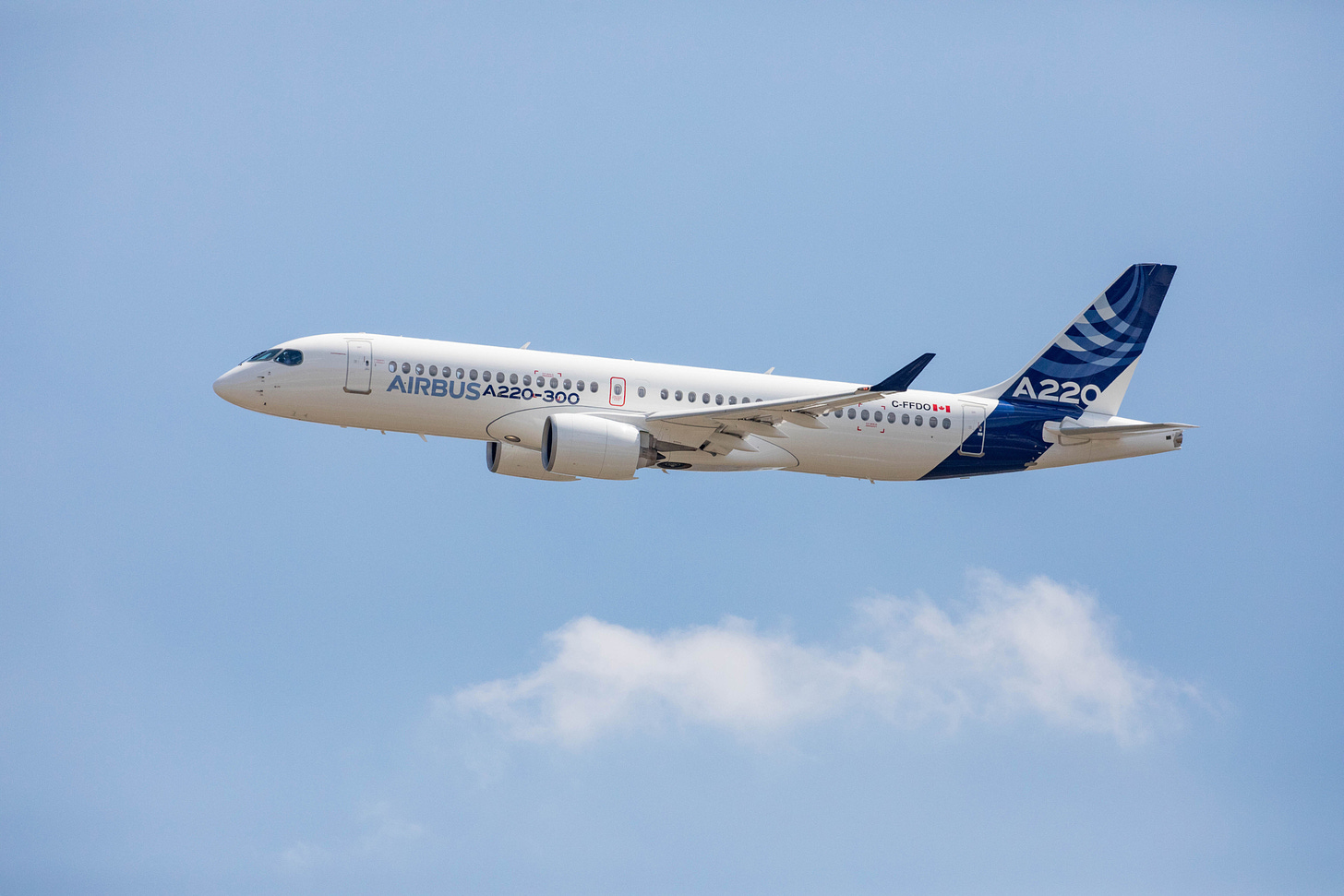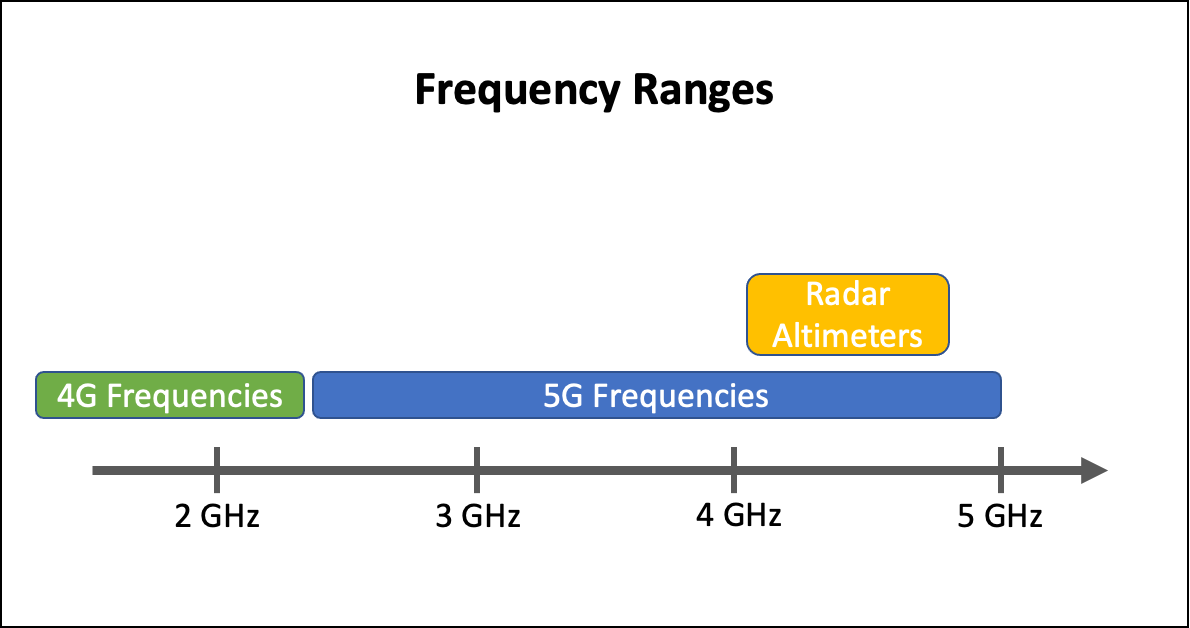Hello and welcome back! I hope everyone had a happy and healthy holiday season. We’ll be starting off 2022 with one of the latest news stories in aviation, but before we get into it, don’t forget to subscribe!
Hundreds of flights into and within the United States were canceled last week due to concerns of AT&T and Verizon’s new 5G rollout. That’s a pretty wacky headline but TL;DR—it is still safe to fly in a plane, and you have a very low chance of having a flight canceled.
Now that your fears are mitigated, let’s get into why this happened. All modern airplanes have a litany of advanced sensors to measure their speed, altitude, and position in the sky. One of these sensors is called a Radar Altimeter. This fancy gadget tells the pilots how high they are off the ground. These are not to be confused with pressure altimeters, which measure how high above sea level you are. These altimeters operate in a radio frequency between 4.2 and 4.4 GHz. For a while, this range has been well out of the way of any other communications equipment. However, with the rollout of 5G in many major cities, we’re starting to see mass communication frequencies infringing on the altimeter’s operating space.
The most popular range of 5G is called the “C-Band”. This band is between 2.4 and 5 GHz, which clearly encapsulates our altimeters. Any time frequencies overlap like that, there is a risk of interference. In this case, interference could mean the altimeters report incorrect altitudes which, in low-visibility situations, could be very dangerous for planes trying to land. Landing is the only real risk here because cell signals have a very hard time making their way 5 miles off the ground. If you’ve ever forgotten to turn on airplane mode and been hit with a data roaming charge you know what I mean.
These cancelations came after AT&T and Verizon began plans to roll out 5G towers near major airports, which caused significant concerns from airlines who spend all day landing at them. It wasn’t just US airlines either. A number of European carriers canceled flights into the US, as they didn’t want to fly into a 5G network that they were not used to operating in.
While this did cause a bit of hysteria, as with most things in the aerospace industry, there was redundancy built-in from the start, and no planes were anywhere close to falling out of the sky. Most of these altimeters are built with EMF (Electric & Magnetic Field) protection, which shields the components from any external interference. Even so, the effects of wider use of an overlapping frequency band were not fully understood and, in an abundance of caution, AT&T and Verizon agreed to pause the rollout near certain airports until the effects were better understood. Additionally, the FAA has cleared 62% of aircraft to operate normally, including 737’s and A319’s, two of the most popular aircraft in the US.
So, given these precautions, you can really only expect to have your flight canceled if you’ll be flying into an airport with 5G towers nearby, with extremely low visibility, and on a plane that hasn’t yet been cleared to do so. All in all, on Wednesday of last week, about 0.7% of flights in the US were canceled and/or rescheduled—a number that has been steadily declining over the last two weeks.
I’d recommend you double check your flight status if you’re headed anywhere soon but remember that if it wasn’t safe to fly, they wouldn’t let you get on the plane.
Thanks for reading this week’s newsletter, have a great rest of your week!
Check out our last newsletter here.
Check us out on social media! Facebook | Twitter
For more details…
Cover Image: Bloomberg
[2] https://www.pcmag.com/news/what-is-c-band
[3] https://www.washingtonpost.com/travel/tips/5g-flight-cancellations/






Are there barometric and gps altimeters on these planes too? Maybe inertial guidance systems? Hard to believe they’d rely on a single source. And the rate of change should have to make sense too. I’m sure there’s a good answer. Thank you for a great article!
Thanks Matthew for providing the insight into a hot topic.